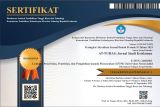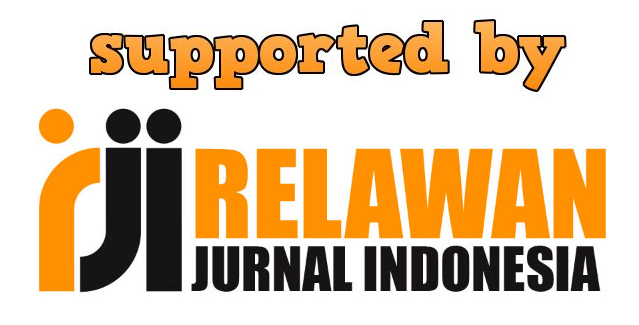Al-Bukhari, M. bin I. (1987). Sahih al-Bukhari. Beirut: Dar Ibn Kathir.
Al-Hajjaj, M. bin. (1991). Sahih Muslim. Beirut: Dar al-Fikr.
Al-Qaradawi, Y. (1995). Fiqh al-Awlawiyyat: Prioritas dalam Syariah Islam. Cairo: Maktabah Wahbah.
Alamsyah, M. A., Hidayat, H. T., & Muslimin, M. (2023). Efektvitas Dakwah Melalui Metode Cawisan Dalam Meningkatkan Pemahaman Agama (Studi Jemaah Mushola Suponyono Palembang). Social Science and Contemporary Issues Journal, 1(1), 203–206. Doi: https://doi.org/10.59388/sscij.v1i1.253
Anwar, M. (2020). Dakwah Digital: Antara Peluang dan Tantangan di Era Milenial. Yogyakarta: Deepublish.
Arkoun, M. (1994). Rethinking Islam: Common Question, Uncommon Answers Boulder. Westview Press.
Assajidin.com. (2023). Nasyiatul Aisyiyah Jadi Wadah Perempuan Muhammadiyah Agar Dapat Berkibar. Retrieved from https://assajidin.com
Assajidin.com. (2024a). Berbagai artikel keagamaan. Retrieved from https://assajidin.com
Assajidin.com. (2024b). Media Dakwah Digital di Palembang. Retrieved from https://www.assajidin.com
Asyari, M. B. (2019). Fiqih Dakwah Dalam Kisah-Kisah Surat Al-Kahfi. El-Umdah, 2(2), 188–202. https://doi.org/https://doi.org/10.20414/elumdah.v2i2.1693
Azra, A. (1999). Esei-esei intelektual Muslim dan pendidikan Islam. Logos Wacana Ilmu.
Bass, B. M. (1990). From transactional to transformational leadership: Learning to share the vision. Organizational Dynamics, 18(3), 19–31. Doi: https://doi.org/10.1016/0090-2616(90)90061-S.
Bruhn, M., Schoenmueller, V., & Schäfer, D. B. (2012). Are social media replacing traditional media in terms of brand equity creation? Management Research Review, 35(9), 770–790. https://doi.org/https://doi.org/10.1108/01409171211255948
Castells, M. (2011). The rise of the network society. UK: Blackwell Publishing.
Charismanto, N. I. M. (2022). Strategi Dakwah Digital Di Era Milenial Studi Kasus Aktivitas Dakwah Habib Husein Ja ‘far Al Hadar. Yogyakarta: UIN Sunan Kalijaga Yogyakarta.
Cohen, J. M., & Uphoff, N. T. (1977). Rural development participation: concepts and measures for project design, implementation and evaluation.
Daft, R. L., & Lengel, R. H. (1986). Organizational information requirements, media richness and structural design. Management Science, 32(5), 554–571. Doi: https://doi.org/10.1287/mnsc.32.5.554.
Dewan Pers. (2013). Kode Etik Jurnalistik. Jakarta: Dewan Pers Indonesia.
Effendy, O. U. (2003). Ilmu Komunikasi: Teori dan Praktek. Bandung: Remaja Rosdakarya.
Elistri, T. S. (2019). Strategi Komunikasi Majalah Assajidin dalam Konsistensi Penyebaran Dakwah Islam Melalui Media Cetak di Kota Palembang. Palembang.
Fakhrullah, A. (2023). Komunikasi penerimaan aktif mahasiswa pada dakwah gerakan tarbiyah di Universitas Islam Negeri Syarif Hidayatullah Jakarta. Jakarta: Fakultas Dakwah dan Ilmu Komunikasi.
Fauzana, R. (2022). Strategi Komunikasi Dakwah bil Qalam Komunitas Revowriter di Media Digital. Idarotuna, 3(3), 229–245. https://doi.org/http://dx.doi.org/10.24014/idarotuna.v3i3.16440
Febriani, S. (2022). Analisis Deskriptif Standar Deviasi. Jurnal Pendidikan Tambusai, 6(1), 910–913. https://doi.org/https://doi.org/10.31004/jptam.v6i1.8194
Habermas, J. (1991). The structural transformation of the public sphere: An inquiry into a category of bourgeois society. Cambridge: MIT press.
Harun, N. (1995). Islam Rasional: Gagasan dan Pemikiran. Bandung: Penerbit Mizan.
Hidayatullah, F. (2018). Media Digital dan Transformasi Dakwah Islam di Era Modern. Jakarta: Prenadamedia Group.
Iqbal, M., & Asman, A. (2021). Dakwah digital sebagai sarana peningkatan pemahaman moderasi beragama dikalangan pemuda. Jurnal Ilmu Dakwah, 41(2), 172–183. https://doi.org/10.21580/jid.v41.2.9421
Katz, E., Blumler, J. G., & Gurevitch, M. (1973). Uses and gratifications research. The Public Opinion Quarterly, 37(4), 509–523.
Kementerian Agama Republik Indonesia. (2024). Kalender Hijriyah 1445 H. Jakarta: Kemenag RI.
Krug, S. (2014). Don’t make me think, Revisited. A Common Sense Approach to Web and Mobile Usability, 3.
Lavie, T., & Tractinsky, N. (2004). Assessing dimensions of perceived visual aesthetics of web sites. International Journal of Human-Computer Studies, 60(3), 269–298. Doi: https://doi.org/10.1016/j.ijhcs.2003.09.002.
Lester, P. (2013). Visual communication: Images with messages. (No Title).
McCombs, M. E., & Shaw, D. L. (1972). The agenda-setting function of mass media. Public Opinion Quarterly, 36(2), 176–187. Doi: https://doi.org/10.1086/267990.
McQuail, D. (2010). McQuail’s Mass Communication Theory. London: Sage Publications.
Moeloeng L. J. (2018). Metodologi penelitian kualitatif. Bandung: PT Remaja Rosdakarya.
Mubarok, F. S. (2023). Penerapan Prinsip Gestalt Dalam Desain Visual Untuk Meningkatkan Memori Dan Pemahaman Pesan. Jurnal Ilmiah Komunikasi Makna, 11(2), 152.
Murjani. (2022). Metodelogi Penelitian Kuantitatif, Kualitatif, Dan Ptk. 5(1), 687–713.
Nasution, H. (2000). Islam Rasional: Gagasan dan Pemikiran. Bandung: Mizan.
Norris, P. (2003). Digital divide: Civic engagement, information poverty, and the Internet worldwide. University of Toronto Press.
Nugroho, Y. (2017). Media, Demokrasi, dan Politik: Memahami Peran Media dalam Demokrasi Indonesia. Jakarta: LP3ES.
Nurhasanah, N., & Shidqi, R. (2024). Efektivitas Dakwah Digital Melalui Platform Media Sosial Instagram@ masjid. imaduddin Terhadap Pengetahuan Keagamaan Dan Perubahan Sikap Beragama Pada Jama’ah. JURNAL SYNTAX IMPERATIF: Jurnal Ilmu Sosial Dan Pendidikan, 5(5), 1140–1148. Doi: https://doi.org/10.36418/syntaximperatif.v5i5.542.
Oktariani, L. (2021). Aktivitas Jurnalistik Dakwah Pada Media As-Sajidin. Palembang: UIN Raden Fatah.
Pimpinan Pusat Muhammadiyah. (2024). Maklumat Penetapan Awal Ramadhan 1445 H. Yogyakarta: PP Muhammadiyah.
Prensky, M. (2001). Digitalnatives, digital immigrants. Onthe Horizon 9 (5): 1-6.
Putnam, R. D. (2000). Bowling alone: The collapse and revival of American community. Simon and schuster.
Rosenstiel, T. (2014). The elements of journalism: What newspeople should know and the public should expect. Three Rivers Press.
Setiawan, A. (2018). Peran Badan Hukum dalam Meningkatkan Kredibilitas Media Massa. Jurnal Hukum Dan Media, 12(1), 45–60.
Siregar, A. S. (2023). Pemanfaatan Media Sosial Sebagai Media Dakwah Dikalangan Mahasiswa UIN Syekh Ali Hasan Ahmad Addary Padangsidimpuan. SENTRI: Jurnal Riset Ilmiah, 2(4), 1300–1312. DOI: https://doi.org/10.55681/sentri.v2i4.747.
Siregar, R. P. B. (2022). Efektivitas Channel Youtube Pemuda Tersesat Sebagai Media Dakwah (Studi Pada Ikatan Remaja Masjid Agung Palembang). Palembang.
Sugiyono. (2017). Metode Penelitian Pendidikan: Pendekatan Kuantitatif, Kualitatif, R & D. Bandung: CV Alfabeta.
Suryanegara, A. M. (2017). Api Sejarah: Pengaruh Islam dalam Sejarah Indonesia. (Vol. 1). Bandung: Surya Dinasti.
Susanto, H. (2019). Transparansi dan Independensi Media di Era Digital. Jurnal Komunikasi Digital, 5(2), 134–150.
Tajfel, H., & Turner, J. C. (2010). An integrative theory of intergroup conflict. In T. Postmes & N. R. Branscombe (Eds.), Rediscovering social identity (pp. 173–190). Psychology Press.
Taufik, M. T. (2020). Dakwah Era Digital: Sejarah, Moetode dan Perkembangan (Vol. 1). Yayasan Islam Ta’limiyah Al-Ikhlash.
Verba, S., Schlozman, K. L., & Brady, H. E. (1995). Voice and equality: Civic voluntarism in American politics. Harvard University Press.
Wahyudi, S. U., Nugrahani, F., & Widayati, M. (2023). Pengembangan Media Pembelajaran Google Sites untuk Meningkatkan Motivasi Siswa dalam Pembelajaran Bahasa Indonesia. Al-Madrasah: Jurnal Ilmiah Pendidikan Madrasah Ibtidaiyah, 7(3), 1064–1082. https://doi.org/http://dx.doi.org/10.35931/am.v7i3.2446
Wertheimer, M. (1938). Laws of organization in perceptual forms.
Yulianti, S., & Nainupu, A. M. Y. (2023). Peran Guru Dalam Pembentukan Karakter Menghormati Orang Lain Pada Siswa Kelas IV SDN 003 Malinau Kota. Proceeding National Conference of Christian Education and Theology, 1(1), 128–137. https://doi.org/https://doi.org/10.46445/nccet.v1i1.706
 (UIN Raden Fatah Palembang)
(UIN Raden Fatah Palembang) 




.png)






